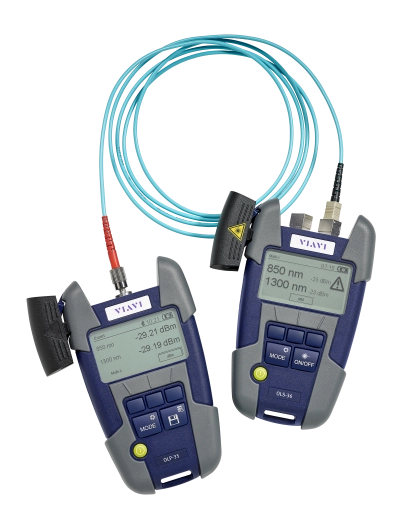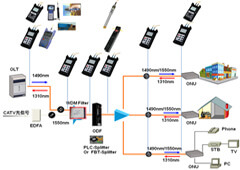All You Need to Understand About Robotic Vision and Its Applications in Advanced Optical Dimension Equipments
Robotic vision stands for a substantial development in the crossway of computer system vision, expert system, and maker discovering. This modern technology improves the precision of optical dimension systems, making it possible for real-time data analysis and enhanced high quality control. Its influence covers numerous fields, from making to medical care. Nonetheless, the evolving landscape of robotic vision questions concerning future abilities and applications (fibre testing equipment). What technologies lie ahead in this transformative field?
Comprehending Robotic Vision: Trick Concepts and Technologies
Robotic vision encompasses the innovations and methods that make it possible for machines to interpret and understand aesthetic information from their environment. This field combines elements of computer vision, expert system, and artificial intelligence to assist in automatic decision-making based on aesthetic information. Trick concepts include photo processing, which includes the enhancement and evaluation of images to remove meaningful functions, and item recognition, which allows equipments to determine and categorize items within a scene.

The Assimilation of Robotic Vision With Optical Measurement Systems
As sectors increasingly demand accuracy and efficiency, the assimilation of robotic vision with optical measurement systems has actually become a transformative method. This synergy permits robots to view and analyze their environments, enhancing the capacity of optical dimension systems to examine and examine objects with unequaled precision. By equipping optical sensing units with sophisticated imaging technologies, robotic vision makes it possible for real-time information collection and processing, facilitating prompt modifications to dimension parameters.
The mix empowers automated systems to find variants in dimensions, surface area high quality, and placement, which are essential in high quality control procedures. Improved formulas, such as artificial intelligence, additional augment this assimilation by enhancing the systems' capacity to adapt to various atmospheres and scenarios. The combination not only streamlines dimension processes however likewise reduces errors, guaranteeing that products fulfill rigid market requirements, thereby solidifying the function of robotic vision in the future of optical dimension systems.
Applications of Robotic Vision in Production
In modern-day manufacturing environments, using vision systems has actually revolutionized manufacturing procedures by allowing makers to execute tasks with remarkable precision and rate. Robotic vision systems are increasingly employed for quality assurance, where they inspect products for problems and assurance adherence to requirements. These systems make use of cameras and advanced algorithms to evaluate products in real-time, considerably decreasing the risk of human mistake.
Additionally, robot vision facilitates automation in assembly lines, permitting robotics to properly identify components and construct them with marginal downtime. This innovation likewise improves inventory management, as vision systems can monitor go now supply degrees and detect disparities, guaranteeing a seamless supply chain.
Robotic vision aids in the implementation of smart factories, where information from vision systems can be incorporated with other innovations to enhance operations (fibre testing equipment). On the whole, the applications of robotic vision in producing demonstrate its important duty in boosting performance, high quality, and productivity throughout various industries
Robotic Vision in Health Care: Changing Patient Care

In recovery, robot vision aids in checking patient progress and customizing treatment sessions to specific demands. It sustains physician by automating jobs such as information collection and person surveillance, enabling for more time to concentrate on direct client interaction. Additionally, robotic vision boosts telemedicine by enabling remote diagnosis and online assessments, linking the space in between people and medical care suppliers. In general, the application of robot vision in medical care is transforming person treatment, bring about improved results, performance, and patient contentment.
Future Trends and Advancements in Robotic Vision Technology
The rapid advancement of robotic vision innovation guarantees to additionally improve its applications throughout numerous markets, including health care. Future patterns show a substantial shift in the direction of integrating expert system and artificial intelligence, making it possible for systems to learn from large datasets and enhance accuracy in time. Improved sensing unit modern technologies and deep learning formulas are anticipated to improve things acknowledgment capacities, enabling robots to interpret complex settings better.

Furthermore, the combination of enhanced fact (AR) with robotic vision will likely transform how robotics assist in operations and diagnostics. This harmony will certainly assist in real-time information visualization, boosting decision-making processes. Additionally, miniaturization of components will result in more small and versatile robotic vision systems appropriate for a range of jobs. As these advancements unfold, industries will witness increased automation and efficiency, solidifying robotic vision as a cornerstone of cutting-edge technical options.
Regularly Asked Inquiries
What Are the Main Components of a Robot Vision System?
The main parts of a robot Discover More Here vision system include cameras for photo capture, processors for information analysis, algorithms for interpretation, and actuators for motion. Together, these aspects enable robots to regard and communicate with their environment successfully.
Just How Does Robotic Vision Improve Accuracy in Measurements?
Robotic vision improves dimension precision by making use of advanced imaging technologies, making it possible for precise object discovery and spatial evaluation. This capability decreases human error, increases repeatability, and enables real-time changes, eventually improving overall dimension dependability and efficiency.
What Industries Advantage A Lot Of From Robotic Vision Innovation?
Numerous industries profit greatly from robotic vision innovation, consisting of production, health care, farming, and logistics. These fields utilize boosted accuracy, performance, and automation, leading to improved productivity and decreased functional expenses in their corresponding processes.
Can Robotic Vision Equipments Operate In Low-Light Conditions?
Robotic vision systems can certainly operate in low-light problems, utilizing advanced sensors and algorithms to improve picture quality. This capacity allows them to carry out successfully in numerous environments, including industrial and monitoring applications, despite having marginal lighting.
What Are the Costs Associated With Applying Robotic Vision?
The prices connected with executing robotic vision vary significantly, influenced by elements such as cams, software program, and assimilation. Additional expenditures include upkeep, training personnel, and possible upgrades to existing systems, which can gather with time.